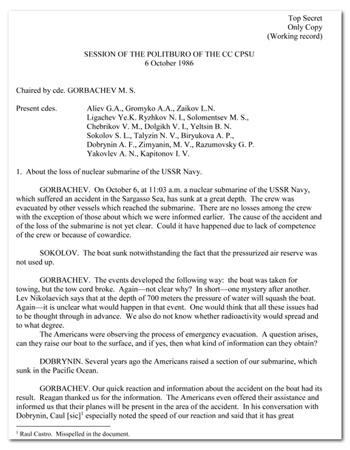Russia is working to control the Mediterranean Sea as previously posted on this site.
Project1234 BSF Nanuchka class guided missile corvette Mirazh 617 departed Black Sea and transited Bosphorus en route to Mediterranean
China is there too: Chinese naval frigate arrived the coast of Tartus

John Kerry demands war crimes probe into Russia’s actions in Syria
The US has called for a war crimes investigation into Russia’s actions in Syria – saying Moscow owes the world an explanation.
Secretary of State John Kerry said Russian and Syrian strikes on hospitals “beg for an appropriate investigation of war crimes”.
He said such attacks are “way beyond” accidental at this point, and accused Moscow and Damascus of undertaking a “targeted strategy … to terrorise civilians”.
Mr Kerry, who was speaking in Washington alongside his French counterpart Jean-Marc Ayrault, said Syrian forces hit another hospital overnight, killing 20 people and wounding 100.
He was speaking as the lower house in Russia’s parliament ratified a treaty with Syria that allows the Russian military to stay indefinitely in the Middle Eastern country.
The Kremlin-controlled State Duma voted unanimously to ratify the agreement, which formalises Moscow’s military presence at the Hemeimeem air base in Latakia.
It is a show of support for the regime of Syrian President Bashar al Assad, and allows Russia to use the base free of charge and for as long as it needs.
Russia began its air campaign in Syria a year ago, reversing the tide of the nation’s five-year civil war and helping Assad’s forces win back key ground.
Moscow says its aim is to help the Syrian army fight terrorism.
**** So what does history tell us?
Soviet nuclear submarine carrying nuclear weapons sank north of Bermuda in 1986
Top Secret Minutes of Politburo discussion show Soviets learned the lessons of Chernobyl
Open U.S.-Soviet communication regarding the accident on the eve of the Reykjavik summit of Reagan and Gorbachev
Posted October 7, 2016
National Security Archive Electronic Briefing Book No. 562
Edited by Svetlana Savranskaya
For further information, contact:
Svetlana Savranskaya: 202.994.7000 and [email protected]
Washington D.C., October 7, 2016 -Thirty years ago, a Soviet nuclear submarine with about 30 nuclear warheads on board sank off U.S. shores north of Bermuda as Mikhail Gorbachev and Ronald Reagan were preparing for their historic summit in Reykjavik, Iceland. But instead of Chernobyl-style denials, the Soviet government reached out to the Americans, issued a public statement, and even received offers of help from Washington, according to the never-before-published transcript of that day’s Politburo session, posted today by the National Security Archive.
The submarine, designated K-219, suffered an explosion in one of its missile tubes due to the leakage of missile fuel into the tube on October 3. The 667-A project Yankee-class boat was armed with 16 torpedoes and 16 ballistic missiles. After the initial explosion, the crew members heroically put out fire and were forced to shut down the nuclear reactors manually because the command-and-control equipment had been damaged. Three crew members died in the blast and fire. Senior Seaman Sergey Preminin stayed in the reactor compartment to shut down reactors, and could not be evacuated. The rest escaped safely.
Initially, it seemed the submarine could be salvaged; it was attached to the Soviet commercial ship Krasnogvardeisk for towing. However, the tow cord broke for unknown reasons and the submarine sank. Submarine Commander Captain Second rank Igor Britanov stayed with the sub until its final moments. He initially came under investigation at home but all charges were removed in 1987. According to statements by U.S. Vice Admiral Powell Carter, the submarine did not present a danger of nuclear explosion or radioactive contamination, as was reported by the New York Times.[1]
The Politburo discussion, published in English for the first time, shows how the Soviet leadership learned the lessons of Chernobyl. The U.S. side was immediately informed about the accident on October 3. The fight for the survival of the submarine lasted three days. Gorbachev notes to his colleagues that Reagan thanked the Soviets for providing information quickly and in a transparent manner. He suggests that “it would be expedient to act in the same manner as we did the last time, i.e. to send information to the Americans, the IAEA, and TASS.” Gromyko emphasizes the need to inform Soviet citizens as well, by issuing a statement from TASS.
The Politburo also heard a report from Deputy Defense Minister Chief of Navy Admiral Vladimir Chernavin. Other members present express concerns about a possible U.S. effort to salvage parts of the submarine and gain access to design information. But Chernavin assures them that the boat design is outdated and therefore is not of any interest to the Americans. Another major concern raised is the possibility of a nuclear explosion or radioactive contamination due to water pressure at extreme depths. Chernavin cites Soviet Navy commission experts who ruled out the possibility of a nuclear detonation and concluded that contamination would happen over a long period and would not reach the surface.
This was the first time the Soviets had ever delivered a public information report immediately after an accident of this type and did not view U.S. actions in the area as a provocation. Communications between the two superpowers were therefore very constructive. Having learned how damaging to the Soviet image the secrecy surrounding the Chernobyl accident was, Gorbachev decided to truly deploy glasnost in this case. In addition to the shadow of Chernobyl, the conduct of both sides, along with the tone of the Politburo discussion, were clearly influenced by preparations for the upcoming summit, which both leaders considered a top priority.
[1] Bernard Gwertzman, “Soviet Atomic Sub Sinks in Atlantic 3 Days After Fire,” The New York Times, October 7, 1986.
READ THE DOCUMENT from the archive here.
6 October 1986 SESSION OF THE POLITBURO OF THE CC CPSU: “About the loss of nuclear submarine of the USSR Navy.”




